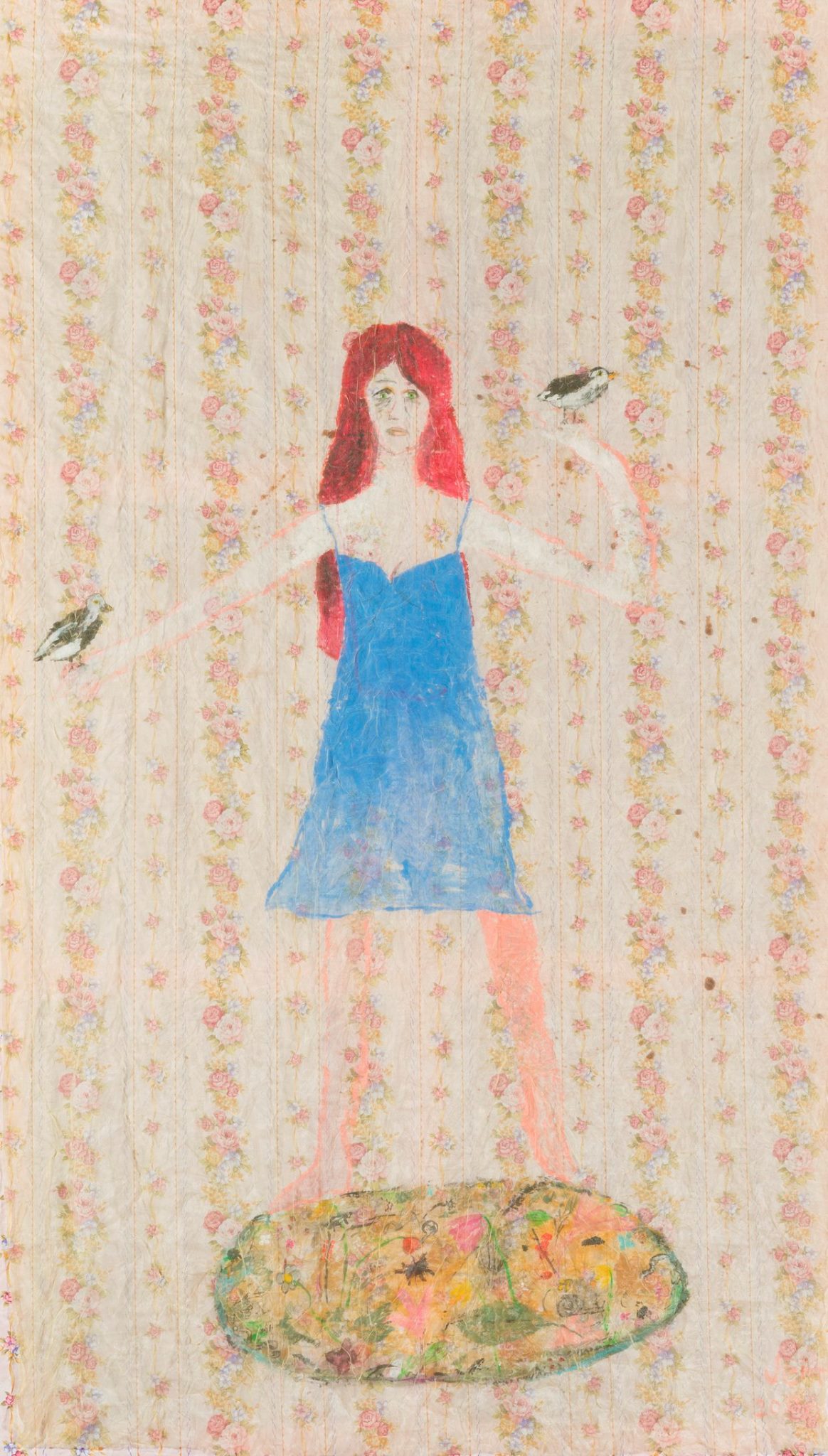Annear on Watson
Stepping forward in time to 2008, in this Refection renowned curator and writer Judy Annear writes about an enigmatic and delightful painting in the collection by celebrated painter Jenny Watson.

Annear on Watson
In 2015 Castlemaine Art Museum was given a very fine work by Australian artist Jenny Watson (b 1951). Woman with Birds was painted in 2008 when the artist had a residency in Tucson, Arizona. Tucson and its surroundings are mainly desert with a great deal of cacti. There are no lush gardens teeming with plant life and attendant insects. The tonalities in Woman with Birds are remembered, or imagined. The woman with long red hair stands barefoot, on the edge of a little ovoid garden which is full of daisies, tulips, poppies and greenery. There are butterflies, worms, snails and other creatures. The woman wears a blue slip, her green eyes are sad, and on each outstretched hand there is a black and white bird with a yellow beak. The female figure is painted onto an oilcloth, which has old-fashioned pink and blue roses running vertically in columns. The design and oilcloth were once common and used for tablecloths and other inexpensive waterproof covers in the home. There is a brown spatter especially on the right-hand side of the painting.
Woman with Birds is covered with a creamy layer of organza, which softens the image and the oilcloth pattern. When Watson and I went to the Biennale of Venice in 1993 (she as artist in the Australian Pavilion and me as commissioner/curator), nine of the fifteen paintings were on taffeta overlaid with netting and sequins. This attention to the support as much as to the activity of painting (various fabrics found, the use of rabbit glue to prime) and the dreamlike aspect of the image (what is this person doing and why?) are both common in Watson’s work.
Watson has not painted words on Woman with Birds nor made a related text panel, though she has often worked in that way since the late 1970s. Instead there is the tantalising title. Blandly descriptive, Woman with Birds invites questions because the woman is depicted as sad. This is not a celebratory painting of a young woman standing in a verdant scene, the conventional epitome of youth and fertility. Rather, this is an image of tension, and the recollection of that tension. Generally speaking, the red-haired woman in Watson’s paintings is either the artist herself or an avatar. Watson has regularly painted animals and herself with them, usually horses, sometimes cats. Birds are unusual in her work, and in this instance may be an inversion of the saying “a bird in the hand is worth two in the bush”. Here the woman has two bird on her hands, and none in the little garden at her feet. She should be so lucky but clearly she thinks not.
When asked in 2008 about other paintings she made in Tucson, Watson wrote:
“I was looking back through a mist at my suburban Australian memories. Although I’d layered fabric over fabric before, there seemed now a necessity to further veil (or cover) the images psychologically and physically, accentuating distant and blurred memories, and as a step to challenging the traditional perception of the painted surface.”
© Judy Annear